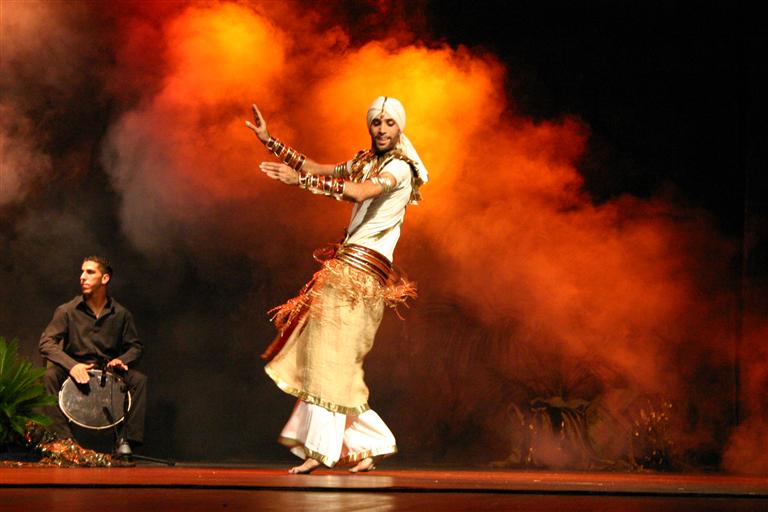
by Saeeda | Jan 11, 2013 | World of Belly Dance
So you have found bellydance classes in East London, and you are ready to go and learn bellydancing, but suddenly have shaking hands as you walk into the class. You might even think if you should go through with it or turn around and go home. Do not worry; it can happen to anyone, who decided to try something new)) Once you are on the class, you will find out that bellydance attracts different people of all shapes, sizes, colours, and you may even find a man or two attending the class. Just remember that most of the other new students will also be hesitant just like you)) so relax and have fun.
Many new students are afraid that they will not be able to do some difficult movements but with a good, supportive teacher this fear will soon disappear. Because the teacher understands that the first class is the hardest one. Saeeda teaches group and private bellydance classes in East London for several years, she knows how to make your first lesson, so you enjoy it.
Keep in mind that bellydance is something new for your body, just relax and remember, it takes some time and some practice. There is one way to help alleviate some of the fears is to sign up for a class with a friend! Then, you can be awkward and nervous together, but you will be pleasantly surprised that you made the right choice to come to the class.
After some time, when you become more comfortable with the movements and with yourself, and perhaps you become the one which will support the new students by letting them know that everyone is nervous on their first class and not to worry because it will pass.

by Saeeda | Aug 31, 2012 | World of Belly Dance
In this type of dancing, which to those who are curious and are surprised there are indeed Male Belly Dancing, has a curious history linked with culture, subjugation and the usual hate and prejudice we read a lot more often. Documentation on Male Belly Dancing, as it is, is scant and tedious to gather, as most are anecdotal and mainly from the present – yet we see ancient Egyptian tombs with paintings – samples here, showing people in those poses typically done in belly dancing (though we’re not sure if they’re actually male).
However, we can always start, theoretically speaking, that dancing itself must have started during unrecorded times when people – the old, young, men and women alike – gathered together to celebrate events and even the ordinary happenings in their lives. People then, as most of us nowadays, could have found means to express physically their joyfulness and other emotions, of which in dancing can be very well expressed in a more authentic manner. The celebrations, with concomitant festivities, must have been continued periodically, such that traditions from them were then developed in time.
These traditions, including that of male belly dancing, have continued to flourish for many, many more years that passed, that everybody in the community would participate in the dancing. We recognize here the origins of folk dancing, of which belly dancing has one its roots. And people from the Middle East, and Africa, where belly dancing is believed to have originated, apparently don’t see much problem from men doing belly dancing in modern times, as long as they’re doing it “folkloric” style.
And available documents show that men have been doing belly dancing, which can be gleaned from folk dancing, or what’s known as “raqs baladi” in Arabic. Male Belly Dancing is most particularly familiar, historically in Turkey. During the long history of the Ottoman Empire, “rakkas” or male belly dancers supplied the need for Ottoman men to watch something visually artistic and pleasing – as women were generally not around during social and entertainment life. Rakkas maybe either “kocek (or kocheks)” or “tavsan oglan,” most of which, even to-date, maybe seen performing during Ramadan.
The Koceks, who would usually wear women’s garb, and with long, flowing hair were described as: “young boys who were sensuous, attractive, effeminate, and carefully trained in music and dance. Their dancing was sexually provocative and impersonated female dancers. It incorporated ladylike walking, finger snapping (a special two-handed finger snap), slow belly movements, suggestive gestures, acrobatics, and playing wooden clappers called campara or, in later times, metal cymbals called zills. The boys danced as long as they stayed good looking and could hide their beards. The dancing boys were an acceptable substitute for the prohibited women dancers.” They faded into relative obscurity after they were officially banned in 1856.
The tavsan oglan (“rabbit boy”) usually have “charming little hats” and “tight pants,” who historians note might have come from the islands in the Aegean and Marmara regions. Most worked as bartenders, too, in meyhanes (traditional restaurants serving hors d’oeuvres – meze, and Turkish beverage – raki).
The presence of these male belly dancers during those historical periods reflect Turkish society then, when men and women were strictly segregated, and where men dominated all aspects of life. Even celebrations, including those in weddings then, have separate functions for men and women, thus these male belly dancers easily supplied what was lacking and missed.
Turkish Male Belly Dancing also had its counterparts in Egypt, where they were around until around mid 19th century. W.E. Lane’s book “Manners and Customs of the Modern Egyptians” and Gustave Flaubert’s “Travels in Egypt” describe these dancers extensi
![Belly Dancing in Modern Egypt]()
by Saeeda | Jul 25, 2012 | World of Belly Dance
Belly dancing has become more and more popular as it has been shown to the entire world through videos and travelling dancers. It seems that everyone wants to learn this exotic dance style. If you would like to see where belly dancing originated you should check out the dancers of Cairo Egypt. From the days of the Pharaohs, it has evolved into the art form we see today Belly Dancing in Modern Egypt.
The world has changed since belly dancing first appeared in Cairo. It was once an important part of Egyptian culture. Today, modern times have made it difficult to find authentic Egyptian belly dancing, but if you look you can still find places where the dance is as authentic as it was centuries ago. If you are planning a trip to Egypt then you should make it a point to find an authentic show.
It might be usual for you to ask your taxi driver or an employee of your hotel. They will most likely send you to Al Haram Street. Here you will find dancers that may not be Egyptian but they are very skilled dancers and can put on quite a show. There has been a great many foreign dancers who have come to Egypt in recent years.
There has been a significant crackdown on the laws regarding shows in Egypt. This explains the amount of foreign dancers who have travelled to Egypt. The dancers from the country have been discouraged by the laws that tell them what kind of costumes they are allowed to wear during their performance.
If you want to find more places in Cairo for an authentic experience you may have to pay a bit more. Five star hotels will typically offer the experience for their guests. The most famous belly dancers in the country will perform at these luxurious hotels. Don’t forget to book the show well in advance and make sure you inquire about the dress code.
The hotels and nightclubs are not the only place to experience an authentic belly dancing show. Check out the ships that offer a night of dinner and entertainment for tourists in Cairo. You will find that it might be a little expensive but it is a good deal for the money. Usually the dinner consists of a sumptuous buffet and the entertainment is outstanding
Whichever way you find to watch some authentic Egyptian dancing you will be sure to enjoy your wonderful night. Take the time to experience this unique and entertaining event.

by Saeeda | Jul 22, 2012 | World of Belly Dance
Where the Origin of Belly Dancing actually was born?
The origin of belly dancing has been an issue that has been long debated by professionals because there is no clear answer to where the origin of belly dancing actually was born. Some professionals such as anthropologists believe that perhaps it was Egypt as there is evidence indicating this by the carvings left that seem to indicate the same movements and pictures that would be similar to belly dancing. Others believe that it originated from India, Central Asia, Middle East and even Africa and there is significant evidence left behind by these ancestors that would seem to support that belief.
The origin of belly dancing can be better defined and understood when you appreciate what the belly dancing purpose was for and who performed them. Many cultures of this day lived with the earth, as one with the earth and it is these societies that gave way for the origins of belly dancing. It is believed that these cultures utilized belly dancing to provide sensuality much in a way as today’s society would call foreplay and it stimulated sexual senses. It was also largely used in sacred ceremonies as well as initiation rites and fertility rituals as it was a helpful tool in creating spirituality.
In countries such as Polynesia and Africa the origin of belly dancing don’t show that it was specifically a dance exclusively for women, as most people today believe. There is plenty of evidence to suggest that dancers of both male and female variety participated in such erotic dancing that was accompanied by a blissful rhythm from the African drums.
In just the opposite of the African tribes who used belly dancing for the erotic dance form that is became the people in India took the origin of belly dancing and interpreted them as an act of worship. In fact, if you visit India it would be well worth your time to go to Konarak to see the temple wall. It is an Indian shrine that dates back to the 13th century and displays dancing girls that are carved in the stone in a variety of erotic poses. This is even one of the still standing remnants of years ago when the origin of belly dancing were beginning.
As with every art form that is studied for years, the origin of belly dancing also suggest that many dancers were banished from these temples because their dances became far more erotic than they were spiritual and were even involved in prostitution. It is from this bit of belly dancing history that people associated belly dancing with strippers and other undesirable professions. In fact, belly dancing is an art of Middle Eastern Dance with its exotic movements and the unique interpretation of the beautiful Middle Eastern music and rhythms.

by Saeeda | Jul 22, 2012 | World of Belly Dance
Belly Dancing in Turkey is a very popular form of entertainment
Belly Dancing is a very popular form of entertainment in Turkey. It is quite common to find dancers performing in nightclubs and restaurants all over the country. However belly dancers are often hired for private events such as weddings, festivals, shows and parties.
 Belly Dancing in Turkey has a long-standing tradition that has lately become a hot tourist attraction. In spite of its popularity these dances remain an intrinsic part of the private lives of all Turks regardless of age or class, and in its most basic form it is a dance for fertility.
Belly Dancing in Turkey has a long-standing tradition that has lately become a hot tourist attraction. In spite of its popularity these dances remain an intrinsic part of the private lives of all Turks regardless of age or class, and in its most basic form it is a dance for fertility.
In its native tongue it is called “Gobek dans” and it is still growing and changing even today especially as it comes under the influence of various cultures. And the authorities are mixed on where they believe the original dance came from, some say from the Greeks and others claim that it is from the Egyptians.
The art is very popular in Turkish nightclubs and is a profitable profession for women who receive their tips from men literally showering them in paper money, or by stuffing bills into their costumes. And of course a little known fact is that men also belly dance. It is not uncommon for men to jump up out of the audience and accompany the woman on stage. Of course this happens more often at private parties or festivals than in the clubs.
As belly dancing spreads the globe it is enjoying increased popularity as it hits different parts of the world. Perhaps the allure of the dance is due to its rich heritage that makes it so unique as a dance style. Because of this heritage many people associate the belly dancing from Turkey with religion and exoticism. And of course this causes some strong opinions about the art; some love it while others despise it.
In Turkey the dancer is generally a well-curved woman, with strong abs muscles who dances to a backdrop of traditional music. She will often accompany the music with the use of clangs, which are the little bells used during a Belly Dancing in Turkey. The music is very rhythmic and the dance emphasizes the movement of the hips and chest. The movements are solid and organic as the dancer moves bare foot across the floor in order to remain connected to the earth.
The cadence of the dancers body parts are the main characteristic of this style. The dancer moves with fluid, supple and well-integrated movements which are very sensual in nature. Most movements concentrate on the hips and shoulders, which alternate with shimmy and sliding moves.
Various other items are used by dancers, which are specific to Turkey such as serpents, swords, veils and candles. These items are most widely used in Turkish folk dances, and are said to have mystical powers. The use of a snake during dances come from the ancient cults and is a foundational element symbolizing male and female sexuality and even the concept of immortality.







Recent Comments